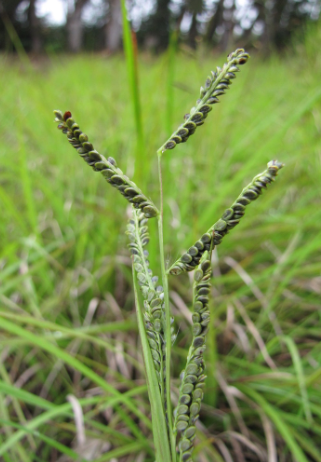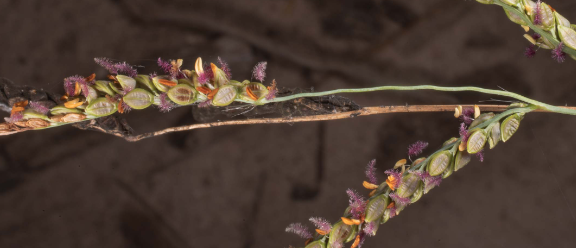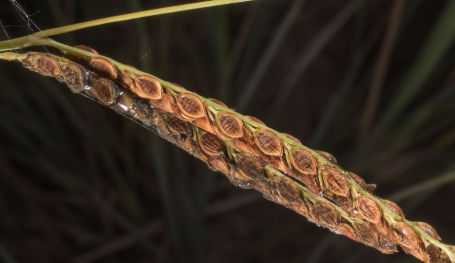Brownseed Paspalum Plant
Brownseed Paspalum (Paspalum plicatulum) grows up to 4 ft, thrives in sandy soil, full sun, moderate moisture, and is neither edible nor medicinal.

Habit
Grass
Height
50-100cm
Growth
Moderate
Soil
Sandy loam
Shade
Full
Moisture
Moderate
Edible
No
Medicinal
No
Origin
Americas
Climatic Condition
Tropical, subtropical
Temperature (°)
20-35°C
Humidity (%)
60-80%
Potting media
Organic compost
Fertilizers
Balanced NPK
Watering
Regular
Plant Weight
2-3kg
Flowering Time
Grass
Soil Ph level
5.5-7.0
Water Ph level
6.0-7.0
Soil EC
Low
Yield Per Plant
Livestock fodder
NPK ratio
15:15:15
life Span
Perennial
Health Benefits
Erosion control
Suggested Grow Media or Potting Mix ?
50% sand, 25% compost, 25% peat moss
Suggested Fertigation/Fertilizers
Fertilize every 4-6 weeks with balanced fertilizer.
Common Diseases and Remedies
Leaf Spot, Rust, Downy Mildew, Aphid Infestation, Root Rot.
Brown spots on leaves, Reddish pustules on leaves, White mold on leaves, Distorted, yellowing leaves, Stunted growth, root decay.
Copper-based fungicides, Fungicides with propiconazole, Fungicides with mancozeb, Chemical insecticides, Soil-applied fungicides.
HEALTH BENEFITS
Primarily a grass used for pasture; limited medicinal use.
Wound healing
· Indigenous peoples use a decoction of Paspalum conjugatum leaves or crushed spikelets to treat wounds and sores.
· The leaves contain a glucoside that promotes blood clotting.
Treating fevers
· The leaves of Paspalum conjugatum are used to treat fevers.
Improving soil quality
· Paspalum improves soil structure, nutrient retention, and prevents erosion.
· This helps plants grow and creates a healthier environment.
Other health benefits
· Paspalum conjugatum leaves are used to treat stomach problems, weakness, and pulmonary diseases.
· A decoction of Paspalum conjugatum leaves is used to treat dysentery.

